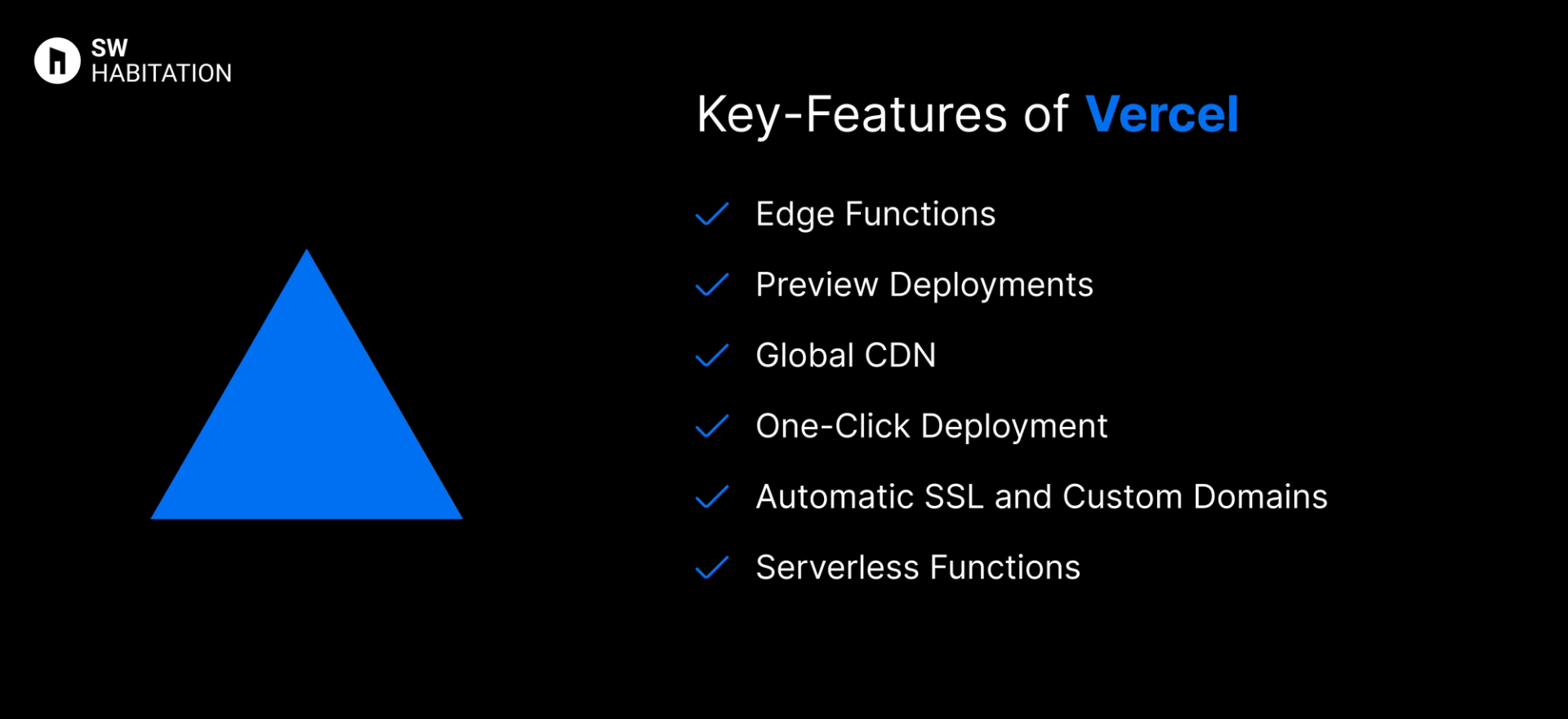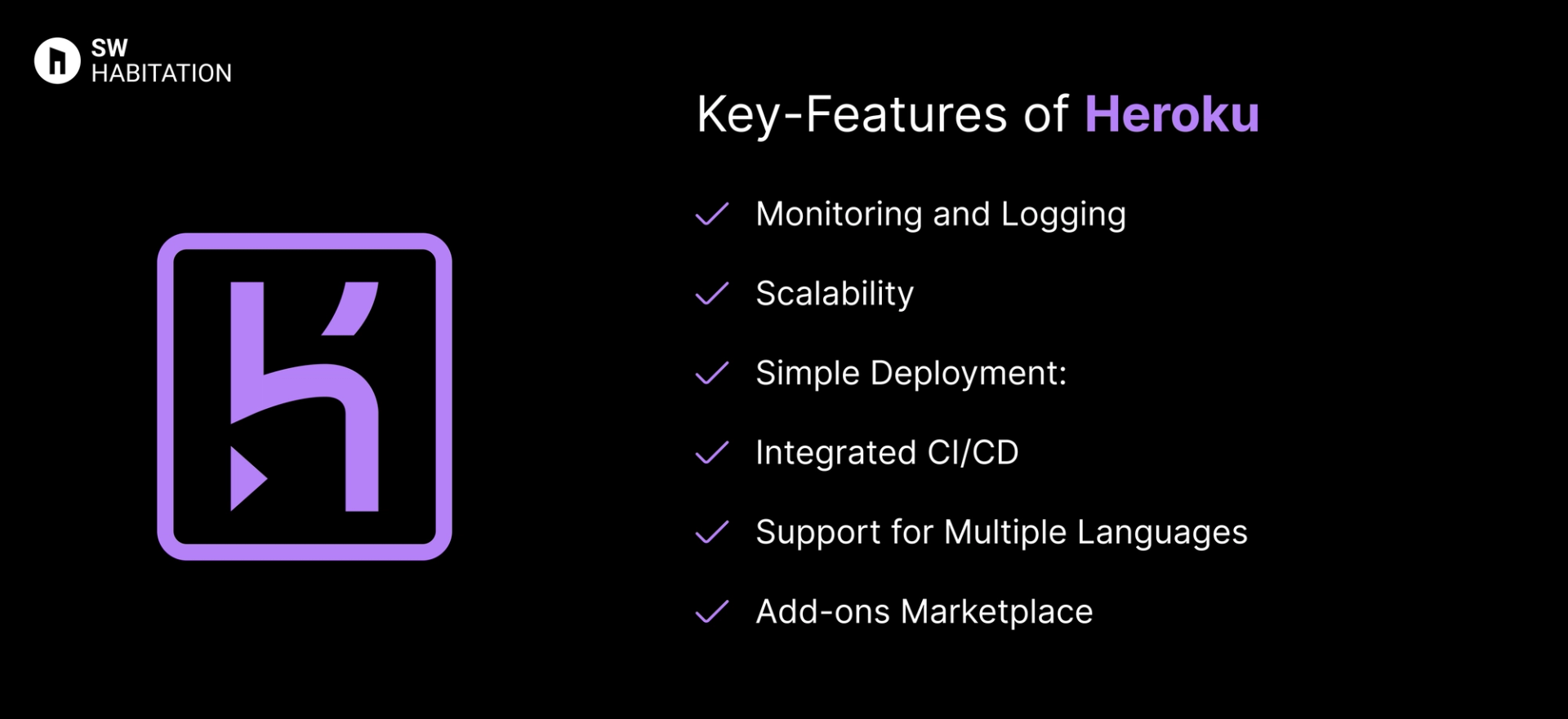Vercel vs. Heroku

Vercel

Heroku
You know when you’ve finished building your website and just want to get it online without dealing with all the techy stuff? That’s where deployment platforms help. They make it super easy to put your site live, just connect your code, click a button, and it’s up and running. No need to worry about servers or complicated setups.
They also take care of the important things like speed, security, and updates in the background. So while they handle the heavy stuff, you can focus on making your website look good and work great. It's simple, right?
What is Vercel?
Vercel is a cloud platform for deploying and hosting frontend applications. It excels at making continuous deployment and global delivery feel seamless. Vercel is the company behind Next.js, so if you’re building a Next.js app, this platform is pretty much a match made in heaven. But don’t worry it also supports other frameworks like React, Vue, and Svelte.
Key Features of Vercel


- Edge Functions: Run code at the edge for lightning-fast responses.
- Preview Deployments: Get a unique preview URL for every pull request, making collaboration a breeze.
- Global CDN: Automatically deploys content across a global content delivery network for fast performance.
- One-Click Deployment: Push to GitHub, GitLab, or Bitbucket and deploy instantly.
- Automatic SSL and Custom Domains: Set up your custom domain with HTTPS in seconds.
- Serverless Functions: Add backend logic without managing infrastructure.
Advantages of Vercel
- Great for Collaboration: Preview links for every branch or pull request.
- Effortless Deployment: Connect your repo, and Vercel takes care of the rest.
- Serverless Functions: Easily add backend functionality with zero infrastructure headaches.
- Free Tier: Generous free plan for personal projects.
- Next.js Native: Built by the same team behind Next.js, ensuring top-notch support.
- Blazing Fast: Deploys across a global CDN automatically.
Disadvantages of Vercel
- Learning Curve for Advanced Features: Basic deployment is simple, but advanced features like edge functions require deeper knowledge.
- Vendor Lock-in: Tightly integrated with Next.js, making migration trickier if you switch stacks.
- Limited Backend Support: Focuses on frontend — complex backends need other services.
- Pricing Can Add Up: The free plan is great, but costs can grow quickly with more traffic and features.
What is Heroku ?
Heroku is a cloud platform that allows developers to build, run, and operate applications entirely in the cloud. It abstracts away infrastructure complexities, providing a platform-as-a-service (PaaS) solution for deploying apps with just a few commands. From simple web apps to complex backend services, Heroku handles the heavy lifting.
Key Features of Heroku


- Monitoring and Logging: Built-in tools for app health and performance monitoring.
- Scalability: Scale apps effortlessly with dynos (Heroku’s unit of computing power).
- Simple Deployment: Deploy directly from GitHub, Git, or CLI.
- Integrated CI/CD: Continuous integration and delivery pipelines.
- Support for Multiple Languages: Node.js, Python, Ruby, Java, Go, and more.
- Add-ons Marketplace: Extend functionality with databases, monitoring, and more.
Advantages of Heroku
- Free Tier: Great for small projects and learning.
- Easy to Use: Push your code and let Heroku handle the rest.
- Add-ons Marketplace: Access to a rich ecosystem of tools and services.
- Multi-Language Support: Deploy apps in multiple programming languages.
- Scalability: Easily scale up as your app grows.
Disadvantages of Heroku
- Performance: Not ideal for performance-heavy apps at scale.
- Cost Can Add Up: Scaling beyond the free tier gets expensive.
- Limited Customization: Less control over the infrastructure.
- Cold Starts: Apps on the free tier may sleep after inactivity, causing delays.
Comparison Between Vercel vs Heroku
Use Cases of Vercel
- Enterprise-Scale Projects: Handles high-traffic apps without breaking a sweat.
- Prototyping and Demos: Instant preview URLs make collaboration smooth.
- Jamstack Sites: Ideal for static sites and serverless functions.
- Next.js Applications: Native support makes deploying Next.js apps a dream.
Use Cases of Heroku
- Hackathons and Learning: Great for rapid development and experimentation.
- Polyglot Projects: Supports multiple programming languages in one platform.
- Startups and Small Businesses: Deploy fast without worrying about infrastructure.
- Prototyping and MVPs: Quickly test ideas with minimal setup.
Conclusion
Deployment platforms are a total game changer if you’re looking to launch your website quickly, reliably, and without any trouble. Whether it’s a personal portfolio, a startup site, or a growing business platform, they handle the technical heavy lifting like hosting, security, and scalability so you can stay focused on building great experiences for your users.
You’re not boxed into a single approach. Most platforms integrate smoothly with the tools and frameworks you already love, letting you deploy directly from your Git repository, preview updates, and roll back with ease. With lightning-fast performance and dependable uptime, deployment platforms simplify the path from code to production. Pick the one that aligns with your workflow, and you’re all set to launch with confidence 🚀
Frequently asked questions
Is Vercel free to use?
Yes, there’s a free tier with generous limits, perfect for hobby projects, portfolios, and early-stage startups.
How easy is deployment with Vercel?
So easy connect your GitHub/GitLab/Bitbucket repo, and Vercel handles builds, previews, rollbacks, and deployments instantly.
Does Vercel include serverless functions?
Yes, You can run API routes/serverless functions as part of your deployment no need to manage a separate backend.
What frameworks does Vercel support?
Vercel is optimized for Next.js, but it also supports React, Vue, SvelteKit, Nuxt, Astro, and static site generators like Hugo and Eleventy.
Is Heroku free?
Heroku used to offer a free tier, but as of late 2022, it now requires a paid plan for most production use. However, it still offers low-cost hobby plans for testing and personal projects.
What are Dynos in Heroku?
Dynos are lightweight containers that run your application processes. Heroku apps run inside dynos. You can scale up by increasing the number of dynos.
Can I use a custom domain on Heroku?
Yes. You can add custom domains via the Heroku Dashboard or CLI and configure DNS settings to point to your app.
